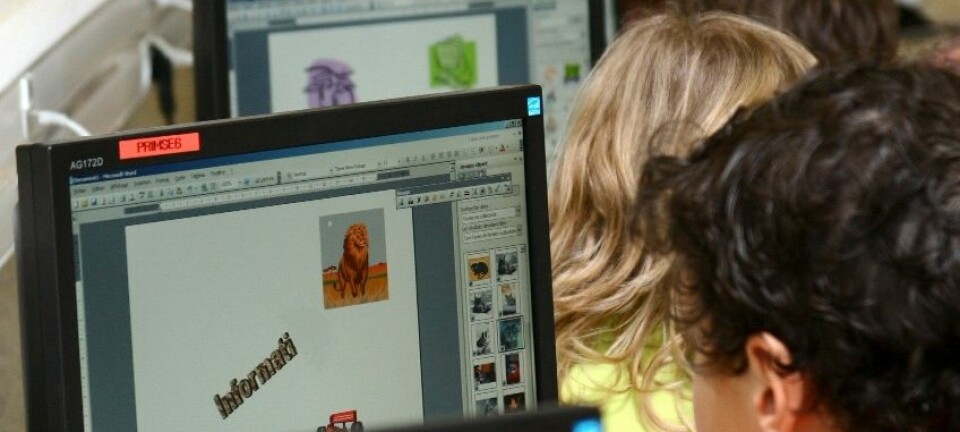
Swedish pupils fend for themselves
The joy of learning and kids’ inner motivation are not being given enough emphasis in Swedish compulsory elementary and secondary schools, according to a recent study.
“Education in Swedish schools appears to have become an individual project. The joy of learning is not sufficiently cultivated and both the pupils’ and teachers’ roles have gradually changed,” says Joanna Giota, a senior lecturer in Gothenburg University’s Department of Education and Special Education.
She was asked by the Swedish Research Council and the Swedish National Agency for Education to investigate how individualisation is expressed in the country’s primary and secondary schools.
She studied more than fifty Swedish studies, published from 2000 to 2010, which in one way or another related to the issue of individualisation in the Swedish school system.
She reports a transition in which teachers have changed from being purveyors of knowledge to being people who lead and support pupils in their quest for knowledge.

According to Giota, cultivating the joy of learning and sparking inner motivation now have lowest priority in classrooms.
“International research backs this up. The result is that we see many students failing and dropping out,” Giota says.
Giota thinks schools should be places where students are evaluated on an equal footing, in spite of their differences and in the way they learn.
“All students should be included and viewed as a resource, not as a problem. A school for one and all is an individually calibrated school where the teaching involves everyone. This is a basic tenet in a democratic society,” asserts Giota.
Started in the ‘90s
According to the Research Council of Norway, educational systems in the West have grown more similar in recent years. But the difference between the Norwegian and Swedish primary and secondary schools is sizeable, in part because the move toward giving pupils more personal responsibility in the 1990s got less support in Norway than across the border.
“The research showed that the Swedish students’ joy in learning appears to have been superseded by future-oriented expectations in which learning is used more as a tool to help the students achieve future goals.”
“Academically weaker students find it hard to cope with the emphasis on the individual and the freer methods of teaching. They fall behind in this sort of educational situation,” says Giota.
Less cooperation
Her investigation agrees with previous studies in finding that less time is now available for teaching the entire class in the classroom. Time for working in groups has also diminished.
“Group projects are now used much less as a learning approach. Moreover, when students are divided up into project groups they tend to divide the work and take on individual tasks. Teachers also have less time to clarify things for the whole class and to review or provide a clarifying summary of homework topics.”
Giota explains that the pupils are also given less insight in the teachers’ specific fields of knowledge. They are left more on their own, fending for themselves with whatever skills they might have developed while learning and working towards achieving school goals.
Inner motivation
She says that Sweden’s objective of providing an individualised school for all students in the country's compulsory primary and secondary school system has not worked.
“The ways in which teachers have defined and concretely implemented this concept are factors that contributed to the decline in results among Swedish students in international comparative tests since the mid-1990s,” Giota says.
What should be done to reverse this negative development?
“School professionals should work to cultivate students' inner motivation and their desire to work. Teachers need to have insight into a range of issues that affect education. It also requires understanding the effect of various ways of organising classroom teaching, and what this means for the individual as well as for groups of students,” she says.
Giota thinks that teaching should be more oriented toward the needs and interests of the students and should match with the students' own learning goals.
“Motivation research has shown that every pupil is dependent on a good relationship with the teacher, otherwise their interest in learning can be nipped in the bud. The teacher should help pupils by challenging them, posing open and genuine questions, displaying committed involvement, respect for and belief in the pupils, and establishing personal, meaningful and relevant learning goals for each of the kids,” says Giota.
----------------
Read the Norwegian version of this article on forskning.no
Translated by: Glenn Ostling









